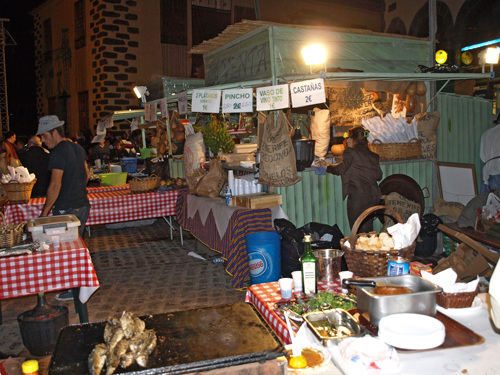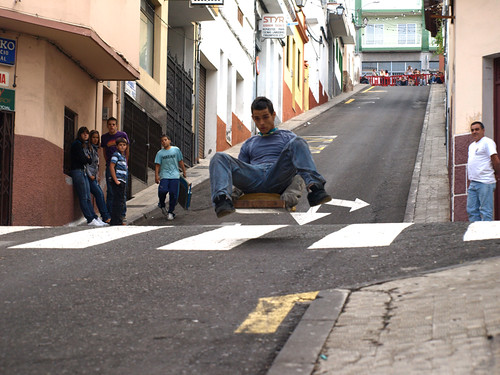 |
| Plato de puchero canario Image by J Toledo Some rights reserved |
Andy Montgomery mentioned that all the vegetable ingredients for puchero were laid out for sale on a special display at her local supermarket yesterday.
In my opinion, puchero is by far the best dish in Canarian Cuisine.
It’s a wonderfully warming stew of meat, vegetables and legumes, which is a perfect dish for a party or family gathering. Indeed one of my recipe books has a version that was used for weddings in the 19th Century. However, it’s also perfectly suited to everyday eating, so here’s a translation of the most typical version used in Canarian home cooking.
Ingredients:
200 grs dry chick-peas (garbanzo beans)
500 grs beef
500 grs pork or chicken (cheap cuts are best)
1 kg cabbage
200 grs pumpkin
200 grs French beans
1 fresh corncob
1 sweet potato
1 kg potatoes
30 grs vegetable marrow
1 or 2 carrots
1 leek
1 head of garlic
1 onion
1 tomato
saffron, thyme and salt.
Method:
Method:
Soak the chickpeas overnight in cold water, drain well and put in a large saucepan with the meat and cover with water. Add chopped leek, onion and tomato to the pan. Crush the garlic, and mix with the thyme, saffron and salt, preferably in a pestle and mortar, then add these to the pot also. When the meat is cooked add all the other vegetables, cut into large pieces, and then continue at a simmer until all the vegetables are tender but still whole.
To serve, remove the meat and vegetables from the pot with a slotted spoon and arrange on serving dishes. Provide plenty of typical Canarian bread (crusty), local wine by the carafe and you have a very pleasant and relaxed meal for your guests to help themselves to. Buen provecho!





 After more than 20 years, posts here will now only be occasional (
After more than 20 years, posts here will now only be occasional (






